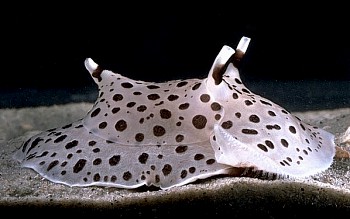
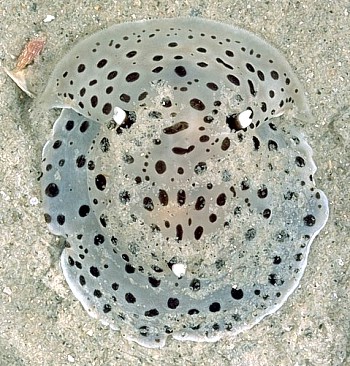
Euselenops luniceps
(Cuvier, 1817)
Order: NOTASPIDEA
Superfamily: PLEUROBRANCHOIDEA
Family: Pleurobranchidae
DISTRIBUTION
Tropical and warm temperate Indo-West Pacific
PHOTO
Port Stephens, New South Wales, Australia, May 1990, 75mm long. PHOTOS: Bill Rudman.
Euselenops luniceps has many modifications for living in a sandy environment which are described on a separate page. It is easily recognised by its flattened, broad rounded shape, and large oral veil, fringed with sensory papillae. In most pleurobranchs the foot and mantle are of similar size but in Euselenops the foot is much larger. Posteriorly, the mantle folds into a relatively long siphon or tube, which allows the mantle cavity and gills to remain in contact with fresh seawater while the animal is buried in the sand.
See page describing and illustrating adaptations for living in sand.
Reference:
• Cuvier, G.L. 1817 La Règne Animal. Vol. 2. (Gasteropodes)., Vol. 4. (Plates).
Rudman, W.B., 1999 (December 1) Euselenops luniceps (Cuvier, 1817). [In] Sea Slug Forum. Australian Museum, Sydney. Available from http://www.seaslugforum.net/find/euseluni
Related messages
Euselenops luniceps in Mozambique
May 30, 2008
From: Valda Fraser
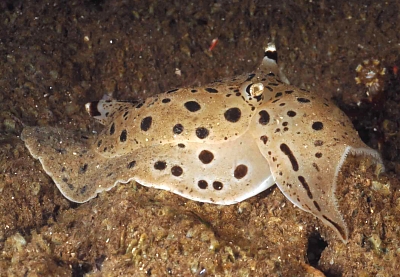
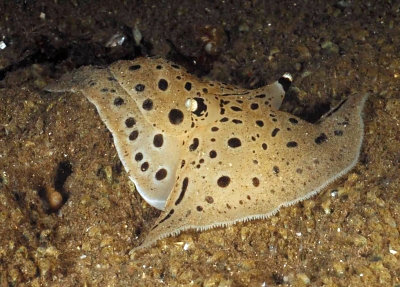
Dear Bill
Euselenops luniceps was out hunting at night in the estuary. I was fascinated by the way it moves and its stunning beauty. Hope it is one of your favourites too.
Locality: Pomene, 2 m, Mozambique, Indian, 9 May 2008, Estuary. Length: 100 mm. Photographer: Valda Fraser.
Regards
Valda
valdafraser@mweb.co.za
Fraser, V.J., 2008 (May 30) Euselenops luniceps in Mozambique. [Message in] Sea Slug Forum. Australian Museum, Sydney. Available from http://www.seaslugforum.net/find/21576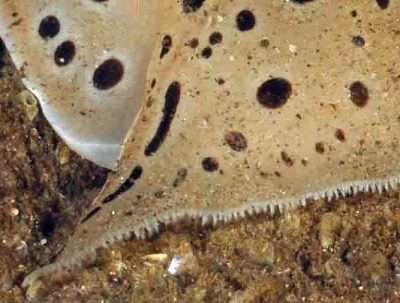
Dear Valda,
Yes Euselenops is one of my favourites. I don't know if it is its beauty or its 'weirdness' which first attracted me. What makes it one of my favourites now is the realisation that its unusual shape is an adaptation to living on soft substrates, and the wide oral veil with sensory papillae underneath is its organ for searching out hidden prey, much like a treasure hunter waves a metal detector over the ground as they walk along. Equally amazing is how many other nudibranchs living in similar substrates have evolved similar adaptations as I discuss on a separate page.
Best wishes,
Bill Rudman
Euselenops luniceps from Nelson Bay, NSW
January 9, 2007
From: Doug Beckers
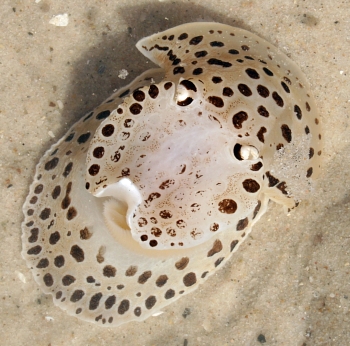
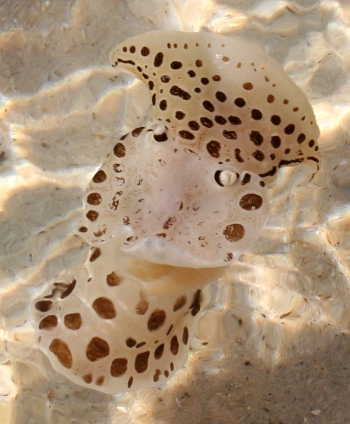
Hi,
I found this sea slug in the shallow water at Nelson Bay. Can I have some help with identification please?
Locality: Nelson Bay, 10 cm, NSW Australia, Pacific Ocean, 26 December 2006, Intertidal. Length: about 110mm long. Photographer: Ruth Steffen.
cheers
Doug
doug@nichepartners.biz
Beckers, D.J., 2007 (Jan 9) Euselenops luniceps from Nelson Bay, NSW. [Message in] Sea Slug Forum. Australian Museum, Sydney. Available from http://www.seaslugforum.net/find/19085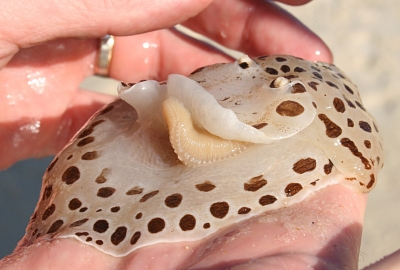
Dear Doug,
This is Euselenops luniceps - a strange name for a strange animal. It is not that uncommon offshore, but it is not usually found intertidally. The photo of you holding it alongside is a good clue to its relationships, as the worm-like object poking out from under the flap on the back of the body is its single gill. It belongs to a group of slugs called 'side-gilled slugs' for obvious reasons. Have a look at the Fact Sheet on this species and the earlier messages which are atached at the bottom. Thanks for the photo of it swimming - a fairly ungainly, if spectacular sight.
Best wishes,
Bill Rudman
Euselenops luniceps - Camp Cove Beach Sydney
July 18, 2006
From: Gary Carter
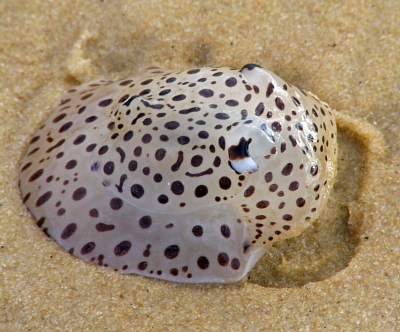
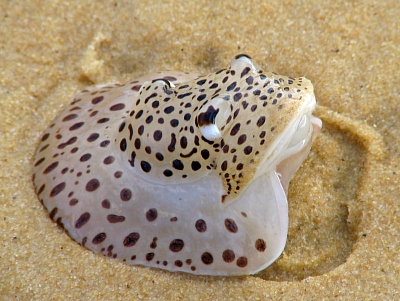
For my wife's birthday the family ventured to Doyles at Watson's Bay. After that we walked out to the South Head of Sydney Harbour and strolled along Camp Cove beach - the beach where Captain Arthur Phillip first set ashore in 1788.
We found Euselenops luniceps in the wave wash up on the beach, After photographing we eased him back past the surf break. I had no idea that there were so many of these sea slugs. He/she could see us and reared and rocked its head back and forth seemingly trying to open its mouth - reminded me of how a frilled neck lizard responds to a challenge
Locality: Camp Cove beach Sydney Harbour, on beach in wave wash, New South Wales, Australia, Pacific, 12 July 2006, inner harbour beach just above the outgoing tide mark. Length: 70 mm. Photographer: Gary Carter.
Gary Carter
cartergs@bigpond.net.au
Carter, G.J., 2006 (Jul 18) Euselenops luniceps - Camp Cove Beach Sydney. [Message in] Sea Slug Forum. Australian Museum, Sydney. Available from http://www.seaslugforum.net/find/17168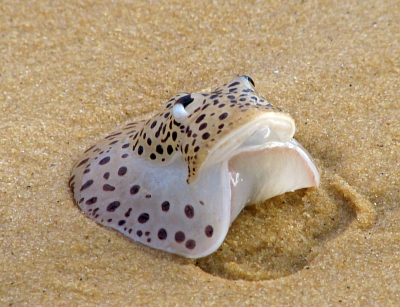
Dear Gary,
It's always a bit sad seeing marine animals washed up like this, out of their element. Your animal is both he and she - all sea slugs being hermaphrodite. It certainly appears to be rearing up in your photos, but the black eye-like spots are just pigment patches on its tentacles, not eyes. The eyes are very small, and can't form images, so the best they can do for 'sight' is sense shadows passing over them. That may be the case here, but I suspect the 'rearing up' is just a result of the foot muscle contracting - like fish out of water, they make some strange movements when stranded on the sand like this.
If you haven't already, have a look at the Fact Sheet on this species and the attached messages, some of which have fascinating photos of it swimming.
Best wishes,
Bill Rudman
Euselenops luniceps mating from N. Sulawesi
November 26, 2005
From: Linda Ianniello
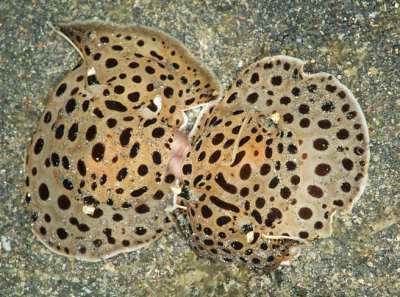
This shot shows the details of Euselenops luniceps mating, found on a night dive.
Locality: Lembeh Strait, Jahar dive site, Indonesia, Sulawesi Island. 26 October, 2005. Muck dive. Photographer: Linda Ianniello
Regards,
Linda I.
lindai1@bellsouth.net
Ianniello, L., 2005 (Nov 26) Euselenops luniceps mating from N. Sulawesi. [Message in] Sea Slug Forum. Australian Museum, Sydney. Available from http://www.seaslugforum.net/find/15361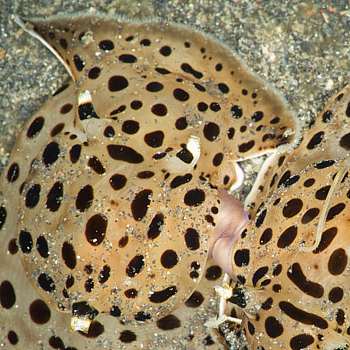
Dear Linda,
Another intersting find! I don't know if mating has been observed in this species before. It's a pity dives on less than pristine reefs are called 'muck dives'. Like this find, most things found on 'muck dives' are definitely not 'muck'.
Best wishes,
Bill Rudman
Euselenops luniceps from Indonesia
December 11, 2003
From: H. Haluk Akbatur.
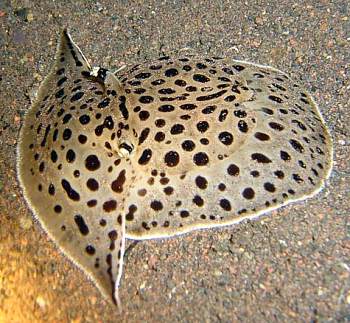
Dear Bill,
On a recent visit to Indonesia I found three different pleurobranchs but can only identify this one - Euselenops luniceps. [see also message 1, message 2]
They were all seen on 18 November 2003, Dive site: Just front in (North-east of Bali, Amlapura, Scuba Seraya Resort,] Size: 8 cm. Depth: 3-15m.
Thanks for any help in identifying them.
H.Haluk Akbatur
Lasergoz@ttnet.net.tr
Akbatur, H.H., 2003 (Dec 11) Euselenops luniceps from Indonesia. [Message in] Sea Slug Forum. Australian Museum, Sydney. Available from http://www.seaslugforum.net/find/11653Dear Haluk,
There is certainly no mistaking this animal. Your photo shows how it extends out its great oral veil to sense for food in the sand. Unfortunately we don't know what it actually eats but I wouldn't be surprised if it turned out to be small crustacea.
Bbest wishes
Bill Rudman
Euselenops luniceps from Jervis Bay
May 26, 2003
From: Sue Newson
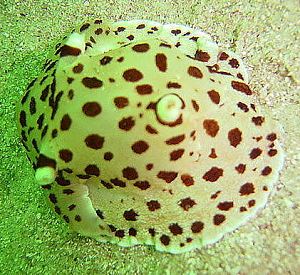
Hi Bill,
To accompany my message about Philinopsis taronga from Jervis Bay [New South Wales, Australia], here is a photo of Euselenops luniceps I found 20cm away.
This photo was taken at a site called The Sandline Drop Off at a depth of 12m. 16 November 2002 at 3pm.
Sue Newson.
snewson@shoal.net.au
Newson, S., 2003 (May 26) Euselenops luniceps from Jervis Bay. [Message in] Sea Slug Forum. Australian Museum, Sydney. Available from http://www.seaslugforum.net/find/10022Thanks Sue,
We haven't got many records of this species. It is probably much commoner than we think, but its burrowing habit keeps it out of the limelight
Best wishes
Bill Rudman
Euselenops luniceps from Lord Howe Island
January 26, 2003
From: W.B. Rudman
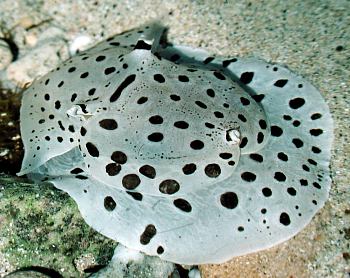
Here is a photo record from Ian Hutton of Euselenops luniceps from Lord Howe Island.
Location: Far Rocks.
Bill Rudman
Rudman, W.B., 2003 (Jan 26) Euselenops luniceps from Lord Howe Island. [Message in] Sea Slug Forum. Australian Museum, Sydney. Available from http://www.seaslugforum.net/find/8961Euselenops luniceps from Japan
October 27, 2002
From: Tomohiko Kurihara
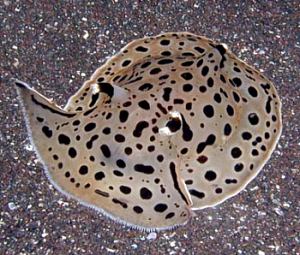
Dear Bill.
I found Euselenops luniceps crawling on a sandy bottom at Osezaki, Izu-peninsula, Japan. It is very rare in Japan, but single animals have been seen some years at Osezaki.
Upper Photo: Animal with bifid left rhinophore. Length 80mm, Depth 12m at night diving. September, 2002.
Lower Left: Close-up of bifid rhinophore.
Lower Right: Mating pair. Length 80mm depth 8m at night. September, 2002.
Photos: Tomohiko Kurihara
The first time I found these animals one of them had a strange left rhinophore, with a bifid tip, and the left side of the head was missing. 10 days later I identified the same animal again by its strange rhinophore. I was very surprised to see that the left side of the head had regrown after only 10 days! In a separate message I have sent some information on it feeding and swimming.
Best regards,
Tomohiko Kurihara
tomo-coo@ny.tokai.or.jp
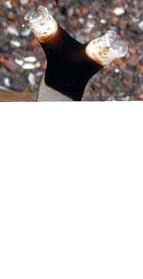
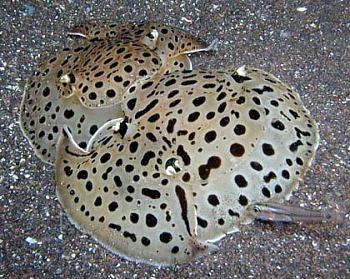
Dear Tomohiko,
Thanks for these interesting photos, and for the information on how quickly it was able to regrow the side of its head. We have very little information on how quickly sea slugs can regenerate parts of their body.
Best wishes,
Bill Rudman
Euselenops luniceps - feeding & swimming
October 27, 2002
From: Tomohiko Kurihara
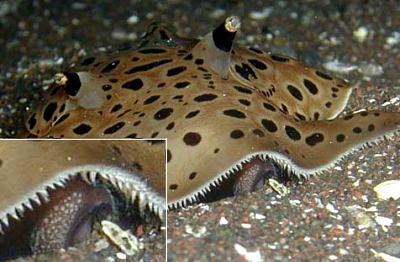
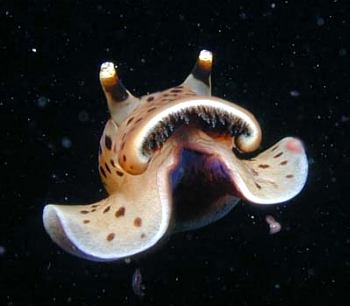
Dear Bill.
To accompany my other message, here is some observations on Euselenops luniceps swimming and feeding.
Upper Photo: Showing oral tube everted and ingesting particles. Length 70mm, depth 4m at night. October, 2002.
Lower photo: Front view of animal swimming. Length 70mm, depth 4m, at night. October, 2002
Photos: Tomohiko Kurihara
When searching for food it uses sensory papillae under the oral veil. When it senses some food, the mouth sometimes projected out under the veil. Here is a photo of it feeding. However whatever it ate, I think it probably swallowed it with sand. I would like to know what food E. luniceps is eating.
When I touched one, it could swim very well for over 20 minutes, as in Andrew's and Akos's messages.
Best regards,
Tomohiko Kurihara
tomo-coo@ny.tokai.or.jp
Kurihara, T., 2002 (Oct 27) Euselenops luniceps - feeding & swimming. [Message in] Sea Slug Forum. Australian Museum, Sydney. Available from http://www.seaslugforum.net/find/8292Thanks Tomohiko,
These are very interesting observations. Your upper photo shows the sensory papillae on the underside of the oral veil very clearly. I have never seen the oral tube everted so clearly. It looks just how the oral tube acts in species of Pleurobranchaea when that related slug is feeding. I agree that the particle it seems to be ingesting is a piece of shell. Unfortunately we don't know what this species feeds on. I susepect it may be small crustacea, but perhaps like species of Pleurobranchaea it will eat any suitably sized pieces of animal material, alive or dead. If you get a chance to test one with a variety of foods, it would be interesting to know.
Best wishes,
Bill Rudman
Euselenops luniceps - mating and swimming
March 14, 2002
From: Akos Lumnitzer
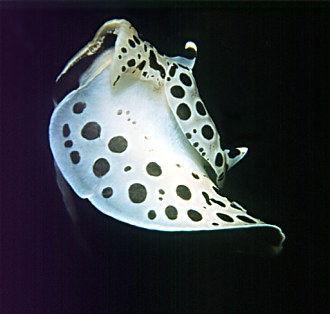
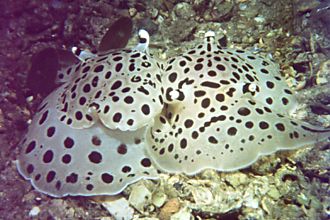
Hi Bill,
After many years of searching for these gorgeous Pleurobranchs, we saw not one but perhaps a couple of dozen at Camp Cove in Sydney Harbour on a night dive in January this year [2002].
I touched one accidentally and found that it swam like some Aplysiids and our old favourite, Hexabranchus sanguineus . I only read later on the species' pages from another Sydney diver's message that yes, Euselenops luniceps can indeed swim. I managed one reasonable shot. Also the pair of them mating may be of interest to you. All were out on the open sandy, shell grit-covered bottom crawling around at a moderate speed. (I am not sure about the speed in micro km/hr though)
Regards
Ákos
Akos.Lumnitzer@exel.com
Lumnitzer, A., 2002 (Mar 14) Euselenops luniceps - mating and swimming. [Message in] Sea Slug Forum. Australian Museum, Sydney. Available from http://www.seaslugforum.net/find/6418Thanks Ákos,
I'll forgive your unscientific speed reading in return for the wonderful photo of it swimming. It reminds be a bit of the European pleurobramch Pleurobranchus membranaceus, but in that species it swims upside down, flapping its large extended foot and letting its mantle hang limp.
Best wishes,
Bill Rudman
Large sea slug? from Sydney Harbour
December 18, 2001
From: Andrew Trevor-Jones
Bill,
While doing a night dive (14 December 2001) off Camp Cove, Sydney we saw a number of what looked like large sea slugs of some kind but I am unsure of the species.
The were 15-20cm long and a pale pink to orange in colour with darker spots. The "head" was shaped like a large arrow head or Napolean's hat and was 50% wider than the body. There was a noticeable mantle. They were quite flat and we found them gliding across the sand. If we picked them up and let them go in the water column, they swam with an undulating motion much like a Spanish Dancer.
They were in 2-4m of water and all were seen on sand.
Andrew Trevor-Jones
atj777@attglobal.net
Trevor-Jones, A., 2001 (Dec 18) Large sea slug? from Sydney Harbour. [Message in] Sea Slug Forum. Australian Museum, Sydney. Available from http://www.seaslugforum.net/find/5845Dear Andrew,
Sometimes this amount of description is enough to identify something but I am afraid in this case I am not sure what you have. If it they were sea slugs there are a couple of animals which are adapted to burrowing in sand and have a wide 'head' much as you describe - but their colour is not very similar to what you describe.
Have a look at the photos of Euselenops luniceps and Kalinga ornata. Another vague possibility is Aplysia extrordinaria but mainly because it swims.
The problem with somewhere like Camp Cove, is that you may have seen a permanent resident of the harbour or a tropical visitor which may be here only for a short duration. If you can end me a drawing it might help. I may have seen a group of flatworms. Can you remember any details like tentacles, head, gills, foot etc?
Best wishes,
Bill Rudman
Re: Large sea slug? from Sydney Harbour
December 18, 2001
From: Andrew Trevor-Jones
Bill,
You nailed it first go. They were indeed Euselenops luniceps. Sorry for not giving you more details in the first place. They looked so unique I figured you'd know it immediately and I was nearly right.
Andrew
atj777@attglobal.net
Trevor-Jones, A., 2001 (Dec 18) Re: Large sea slug? from Sydney Harbour. [Message in] Sea Slug Forum. Australian Museum, Sydney. Available from http://www.seaslugforum.net/find/5855Dear Andrew,
I'm glad we sorted that one out. I would not have liked to be stumped by one so close to home.
Best wishes,
Bill Rudman
Euselenops luniceps from Papua New Guinea
June 18, 2001
From: Mary Jane Adams

Hi Bill,
I found this Euselenops luniceps near Bunama Mission, Normanby Island, Papua New Guina, the same divesite as the Melibe mirifica and the Kalinga ornata I have previously sent you. The divesite is a silty-sandy bay with a wide shelf which slopes gently to seven meters, then drops off steeply. All three of these slugs were observed actively hunting at night in shallow water.
I know these slugs are not closely related, however, they all have wide oral veils with sensory papilla and they appeared to be hunting the same type of prey in essentially the manner. They all looked like they were feeling their way across the sand with the papillae on their oral veils. Kalinga and Euselenops were speed demons compared to the
sluggish Melibe. Euselenops changed directions frequently, apparently in response to finding prey. There are a large number of crustaceans on the sand here at night and I think that is what they were all hunting.
Length: about 50 mm, Depth: 3-4 meters, March 11, 1999
Best regards,
Mary Jane
divepng@yahoo.com
Adams, M.J., 2001 (Jun 18) Euselenops luniceps from Papua New Guinea. [Message in] Sea Slug Forum. Australian Museum, Sydney. Available from http://www.seaslugforum.net/find/4613Dear Mary Jane,
Thanks for the interesting observations. These burrowing animals all have similar adaptations for hunting their prey. I have watched Melibe enveloping and swallowing small crustaceans. It would be great to factually catch the other two in the act.
Best wishes,
Bill Rudman
The burrowing pleurobranch Euselenops luniceps
December 2, 1999
From: Bill Rudman.
I have prepared two pages on the burrowing pleurobranch Euselenops luniceps, to accompany the wonderful photo of Kalinga that Mary Jane Adams has kindly sent.
Best wishes,
Bill Rudman.
